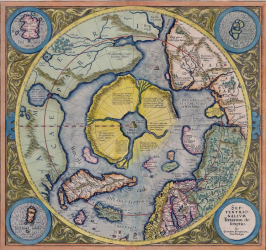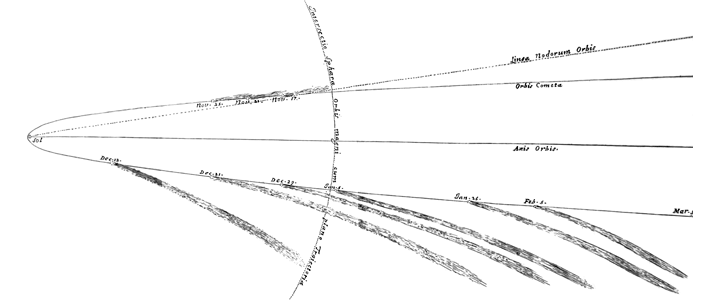Stephen Hawkings greatest single achievement was simply living as long as he did. He died at the age of 76 having battled motor neurons disease for more than 50 years when the life expectancy for this condition was less then 5 years.
He was a theoretical physicists and while had every right to develop his ideas, people seem to overlook the ‘theoretical’ aspects of his career. His book “A brief history of time” was a best seller allegedly describing in layman’s term the actual working of the cosmos. He was adopted into the main stream science’s (MSS) hall of fame as having made major contributions to our current knowledge of cosmology.
This would be all be great if it were true.
Hawkings was firmly entrenched in a gravitational model of the universe. While he did develop a theory of ‘black holes’ one can definitely argue whether this was a positive contribution of our overall understanding of the cosmos. Black holes have no part to play in the electric universe (EU) model and certainly no part to play in WRC.
Some of Hawkings work suggest that his mathematics gets in the way of real empirical science. Theoretical physicists are fantastic at developing models of how Nature should behave and these models have parted ways from actual empirical observations. Almost every new observation offers new surprises for the physicists but rather than thrown out old models they are amended and further complexed to yield even more fanciful (unfulfilled) predictions.
Black holes were supposed to be locations of intense gravitation, light could not escape. But then it was found that black holes should in ‘theory’ radiate and thus cool down. No worries, let’s think up a scheme whereby, some radiation does indeed escape, sure why not call it ‘Hawking radiation’ and let MSS accept this new theory as fact!!!
Perhaps if Hawking had considered the ‘singularity’ in term of the Cosmic Anode as described by WR then he might have been a more productive researcher.
12 Diagrams that Altered Our Consciousness
Ptolemy’s Geocentric Universe
What’s remarkable about Claudius Ptolemy’s vision of the universe is that it persisted so long among both Islamic and Christian astronomers. Ptolemy’s treatise Almagest first came on the scene in the second century CE and remained the go-t0 astronomical text for the next twelve hundred years, firmly planting the geocentric model of the universe in the brains of Medieval thinkers. Ptolemy wasn’t the first to present this view of the universe (in fact, the geocentric universe is called the Aristotelian Universe, since Aristotle described it in his treatise De Caelo et Mundo), and some thinkers differed on the proposed order of the myriad celestial bodies, but his view was certainly the most enduring.
Nasīr al-Dīn Tūsī’s Rolling Rotation
Thirteenth century Persian scholar Nasīr al-Dīn Tūsī, like other astronomers of his day, subscribed to the geocentric model of the universe, but he made incredibly accurate observations and predictions of planetary movements at the newly constructed Rasad Khaneh observatory in Azarbaijan. He also put forth the idea of the Tusi-couple, suggesting that the latitudinal motion of the inferior planets could be explained by the planets rotating as they rolled within their circular paths. It has been suggested that Tūsī’s writings may have influenced Nicolaus Copernicus, as the latter astronomer would use arguments similar to Tūsī’s in his criticisms of Ptolemy.
Copernicus’ Heliocentric Universe
Nicolaus Copernicus (1473-1543) would bring us from a geocentric universe to the heliocentric one, offering a very familiar, if incomplete, picture of our solar system. Copernicus was reluctant to publish his ideas concerning the heliocentric universe during his lifetime, but they would eventually spark an enormous revolution in astronomy.
Thomas Digges’ Distant Stars

Thomas Digges (1546-1595) translated Copernicus’ ideas into English and added a few ideas of his own. This diagram offers a hint at one of those ideas: that the star field was not a fixed shell, but that infinite stars exist in the universe at varying differences. Compare his mass of stars to Copernicus’ proposed outer ring of the universe, which Copernicus labels “Stellarum Fixarum Sphaera Immobilis.”
Galileo’s Phases of Venus
Many of the diagrams Galileo Galilei (1564-1642) put in his Sidereus Nuncius (Starry Messenger) supported the heliocentric model by demonstrating the movements of other planets. Galileo observed that Venus had phases, much like Earth’s moon, which fit with Copernicus’ predictions that planet’s phases would be visible from Earth as both Earth and Venus orbited the sun.
Galileo’s Movements of the Moons of Jupiter
For centuries, the Aristotelean concept of the universe, that the planets revolved around the Earth, had dominated, so Galileo’s observation that celestial bodies orbited Jupiter caused quite a stir. In fact, the idea that smaller planetoids orbited some non-Earth planet was so radical that many astronomers and other thinkers refused to believe such a thing was possible. Galileo’s observations were confirmed, however, by the Jesuit astronomer Christopher Clavius—who was, incidentally, a believer in the geocentric model.
Tycho Brahe’s Attempt to Reconcile Geocentricism with the Copernican System
Not everyone readily accepted Copernicus’ heliocentric model of the universe, but some astronomers did try to reconcile Copernicus’ observations with a geocentric model. Most famous among those is Tycho Brahe (1546-1601), who attempted to mate Copernicus’ geometric calculations with the philosophy of the Ptolemic Universe. Copernicus’ theories didn’t completely jibe with the data available at the time (something that Kepler and later Newton would help resolve), and Brahe believed that the Earth was too sluggish a body to move. What you see above is a depiction of his proposed Tychonian system, in which the sun still orbits the Earth but the other planets orbit the sun.
Kepler’s Platonic Solid Model of the Universe
Johannes Kepler (1571-1630) was a true successor of Copernicus’ and his first astronomical treatise, Mysterium Cosmographicum, was a defense of the Copernican system. In attempting to understand the movement of the planets, Kepler looked to Platonic solids, coming up with a way to describe the orbits of the planets by nesting three-dimensional polyhedra inside one another. Kepler believed that, in examining these forms, he was divining God’s plan for the universe. The treatise attracted the attention of Brahe, with whom Kepler worked and under whom he developed some of his most important observations.
Kepler’s Elliptical Orbit
Later, however, Kepler would develop his laws of planetary motion and hit on the ellipse as a possible shape for planetary orbital paths. He attempted to calculate the entire orbit of Mars roughly 40 times before considering an elliptical shape for Mars’ orbit. He found that planets moved faster when they were closer to the sun, and the diagram above shows his calculations and suggestion of the sun’s attractive properties.
René Descartes’ Mechanical Universe
Before Isaac Newton developed calculus and defined his universal laws of gravity, philosopher and mathematician René Descartes (1596-1650) proposed a mechanistic vision of the universe. Descartes believed that God was a watchmaker and that the universe operated as perfect clockwork. Descartes believed that the universe was a plenum, and therefore no vacuum existed in space. Planets move around the sun, Descartes claimed, because they are swept around by whirlpools of matter, not orbiting in a vacuum. Descartes’ beliefs about the universe were influential for a time, but eventually Newtonian physics would win out.
Isaac Newton’s Path of a Comet
It was Sir Isaac Newton (1642-1727) who would remove any mathematical doubts that the Earth orbits the sun through his universal laws of gravitation. In the diagram above, adapted from Newton’s diagram in his 1687 Philosophiae Naturalis Principia Mathematica, we see the effect of gravitation on a comet that was visible between 1680 and 1681 and that followed a parabolic orbit. Newton’s descriptions of gravity explained Kepler’s calculations regarding elliptical orbit and Kepler’s theories regarding the “attractive” properties of the sun.
William Herschel’s Map of the Milky Way
As our view of the solar system itself became clearer, astronomy increasingly turned toward the place of our solar system in the wider galaxy. William Herschel (1738-1822) used his telescopes to map the shape of our galaxy, the Milky Way, and estimate our place in that galaxy (our sun is the darker star in that cluster). We had established by this point that the Earth, without question, orbits the sun, but also recognized that our sun moves as well. We had moved far beyond the circular orbits and shells of stars that astronomers had held to for hundreds of years. In our thinking, our solar system had finally joined the larger universe, and diagrams like these showed us as just one system in a larger galactic neighborhood.




